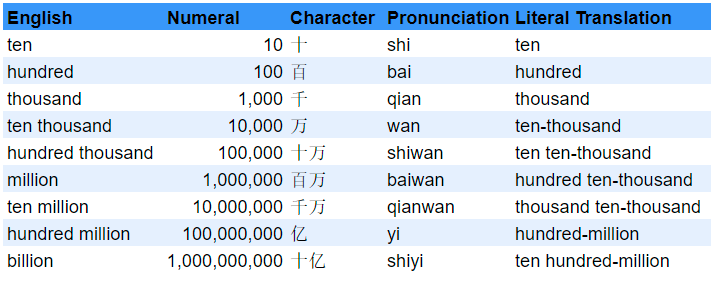Chinese characters aren’t far from intimidating a learner, but is that the only thing that’s difficult? Is Chinese really the hardest language in the world to learn? Let’s discuss what exactly makes a language hard or easy to learn?
Language difficulty depends on a lot of factors such as but not limited to the following:
- Motivation or necessity to learn the language! Can you pull on despite adversities or are you getting embarrassed and overwhelmed about making mistakes and feeling deterred from learning the language!
- Perseverance to learn a language. Whether you are steadily moving ahead with realistic goals or are burning out due to over-ambitious goals!
- Time invested in learning! This becomes way critical, because you are in a responsible job, married, or have kids, parents, grandparents to look after! Amidst all these, how many hours you can spare each day, is a point of great concern.
- Studying regularly every day versus studying on weekends!
- Support at Home. Do you have a supportive environment at home or are you drawn into household chores?
- Prior Linguistic Knowledge of Korean, Japanese or any other Asian Language.
- A conducive learning environment. Are you living in a country that neither has as many resources to support your learning nor considers it a priority!
- Learning methodology – Are you learning from an app, books, offline or online? The learning process depends on a series of factors: cognitive factors (language aptitude, learning strategies), affective factors (attitudes, motivation, anxiety), metacognitive factors, and demographic factors.
- Identification of that one unique way you are able to grasp better.
- Availability of reliable resources. Do you have access to good learning resources or are you struggling with off and on resources?
- Age. They say that children learn languages the best. But that doesn’t mean that adults should give up? The older you get the more difficult it is to learn to speak a language like a native. But no one knows exactly what the cutoff point is—at what age it becomes harder, for instance, to pick up noun-verb agreements in a new language. In one of the largest linguistics studies ever conducted—a viral internet survey that drew two-thirds of a million respondents—researchers from three Boston-based universities showed children are proficient at learning a second language up until the age of 18, roughly 10 years later than earlier estimates. But the study also showed that it is best to start by age 10 if you want to achieve the grammatical fluency of a native speaker. As quoted in Scientific American.
- Comfort in their Country of Residence. Are you in a Chinese speaking country that supports you wholeheartedly – have you opted for travel immersion or community learning!

There are elements of the Chinese language that are simple and then there are those that were crazy difficult.
What is easy about Chinese?
Grammar Chinese grammar has its own share of simpler things. Chinese doesn’t have any word form changes (morphology) like English — for example, “go” and “went”. On the contrary, has only a one-word form for every tense! Except to express the past tense, you simply add the particle “了.” Chinese languages is also simpler in terms of articles (“a”, “an”, and “the”), verb changes wrt tense and person, and plurals, that are not found where Chinese characters are used. Most Chinese sentences also follow a rule and hence, can be constructed easily. According to an East Asia Student the sentence order goes like this:
Sbj + [Tme + Mnr + Plc] + Neg + Aux + Vrb + Cmp + Obj
(subject, adverbials [time, manner, place], negative, auxiliary verb, verb, complement, object)
Making mistakes in tones won’t get you killed! Mandarin’s five tones are important, but for the most part you can get by without them. Sure, you might make the mistake of saying ‘death’ instead of ‘four’. However, Chinese words generally come in character pairs, so if you botch the tones, don’t worry, the combination and the context will usually save you the embarrassment.
Specialized vocabulary Chinese naming system for objects is based on normal characters with clearer meanings. For example, the Chinese name of folic acid, 叶酸, which translates as “leaf sour” is such because “folic” stands for leaves! The Chinese language was developed using images, which means in its simplest form it resembles a game of Pictionary. Many (not all) of the Chinese characters we use today come from ancient drawings of the items they are meant to describe. This can be very helpful for those learning Chinese for the first time. A common example is a word for mountain “shan, 山.” The three points of the character are meant to resemble the three peaks of a mountain ridge.
Small numbers Expressing small numbers in Mandarin (under 10,000 [see the section below on big numbers]) is fairly simple. There are a few rules having to do with zero that might take a little effort to memorize, but other than that, small numbers are easy as pi.
Listening Instead of truly listening to Chinese, learners look at the characters and believe Mandarin is hard to learn! But since when did listening become a part of the written component of a language? Learners must know listening comprehension in Chinese isn’t any more difficult than in any other language.
Pronunciation of the Pinyin. Pinyin system is a result of a romanization system used to convey the pronunciation of Chinese characters in Latin letters. Chinese Pinyin is consistent. After you learn the rules, you will always be able to pronounce words properly when you read them in Pinyin. Pinyin also makes it easier to look up words in a dictionary and type Chinese characters on a computer.

What is hard about Chinese?
Reading and writing Chinese characters In order to read a Chinese newspaper, learners must be able to read around 3,000 characters. And there’s only one way to learn that many characters: Study-Practice-Study. But it is not as bad as you may think. It is not like there are thousands of completely different Chinese characters with no similarities. Instead, Chinese characters are made up of building blocks called radicals(that aren’t really characters but you could think of as the base component of each character that holds information about the character’s meaning and/or sound). Radicals have 1 to 17 strokes. Radicals and strokes must be written in order: usually left to right and top to bottom. It refers to the leftmost part of the character usually). There are around 214 radicals in the Chinese language. and once you learn all the radicals, you can write any character. Different types of radicals and their position in a character makes it easier for a learner to remember and identify a character. While it’s not that easy, it’s still better than memorizing every character as a completely unique collection of lines! Characters remain a challenge even for the Chinese natives, who make spelling mistakes like us learners. Characters of the Chinese language that make it one of the hardest languages in the world to learn are also one of the most intriguing and drawing aspects of the Chinese language. With over 67% of the words being made up of two or more characters, you can see how it earns the title as one of the most difficult languages to learn.
Different Calligraphy Styles. There are five traditional forms of Chinese calligraphy: Seal Character, Official Script, Formal Script, Running Script, Formal Script, Running Script, and Cursive Hand. These are considered classical arts and representative of Chinese art styles. The most popular calligraphy style is the Seal Character style developed by the Han people. It first appeared during the Zhou Dynasty (1045 – 221 BC) and is still popular among calligraphy artists today.
Pronunciation of characters Chinese characters are not phonetic. So, when you see a new word, you have to look it up in the dictionary to find the Pinyin pronunciation guide. Often, you can make a guess about the pronunciation of a Chinese character based on how it looks but it does not always work. This makes learning tougher by having to memorize the pronunciation for every character you learn! Thanks to its unique sound system, Chinese is filled with similar-sounding words. This makes it quite difficult for non-native speakers to differentiate between words and sound combinations.
Chinese dialects There are several Chinese dialects, including Cantonese — spoken primarily in southeastern China, as well as in Hong Kong and other parts of Southeast Asia — which have different written characters and pronunciations and are also very difficult to learn. People who wish to study Chinese must put in years of work to reach fluency and even then it is rare to achieve native-like proficiency.

Parts of Chinese grammar have a concept of using different measurement words when numbering items, and one needs to use the right measure word for the right noun. Another thing that can be difficult to say in Chinese is a simple “yes” and “no.” There are a few different words that mean “no,” and you need to learn the rules for when to use them. But saying “yes” in Chinese is a little complicated! While there are several words in Chinese that mean a yes, but often to say “yes” in Chinese, one needs to repeat the main verb of the question! For example, if someone asks in Chinese, “Did you eat?”, then your answer would not be a “yes” but “ate”! Now the complicated part; In Chinese, if you didn’t hear the verb clearly, then you can’t answer the question! You just can’t pretend that you understood the question, and say yes.
Speaking Chinese with tones In Chinese all words have tones. The tone is an essential part of the word that gives each word its unique meaning. So if you say the tone wrong, you might end up meaning a whole lot of different word. The Chinese language uses 4 tones along with a neutral tone. The first tone is high like singing, the second up like an English question, a third that goes slightly down and backs up a little, the fourth going down sharply (like you’re cussing). Finally, the neutral tone is a little bit like an English unstressed syllable. Take, for example, the words 妈 (mā) — mom, 麻 (má) — hemp or flax, 马 (mǎ) — horse, 骂 (mà) — to scold or verbally abuse and 吗 (ma) — a question particle.
To a learner’s dismay, a character’s tones change wrt the context of a word or sentence. If you are a native English speaker, tones will keep you occupied with practice. In fact, “foreigners” are famous in China for having bad tones.
Totally different set of vocabulary from English The reason the vocabulary is difficult is that Chinese and English have few cognates.
Large numbers Chinese language poses a challenge to learners who learn numbers bigger than 9,999. As an example, English uses the word “thousand” to refer to numbers that have from four to six digits (1,000-999,999), but Chinese uses the word “千” (qian) only for numbers that have four digits (1,000-9,999), “万” (wan for numbers with five to eight digits (10,000-99,999,999) etc. Here’s a table showing the Chinese numbering system.

The difficulty arises not only from this difference between the languages that makes it complicated to translate from one language to another but also because Chinese doesn’t use the commas in the numerals like English. So it takes quite some time for a learner to say a large number in Chinese, as they have to stop and think about it.








